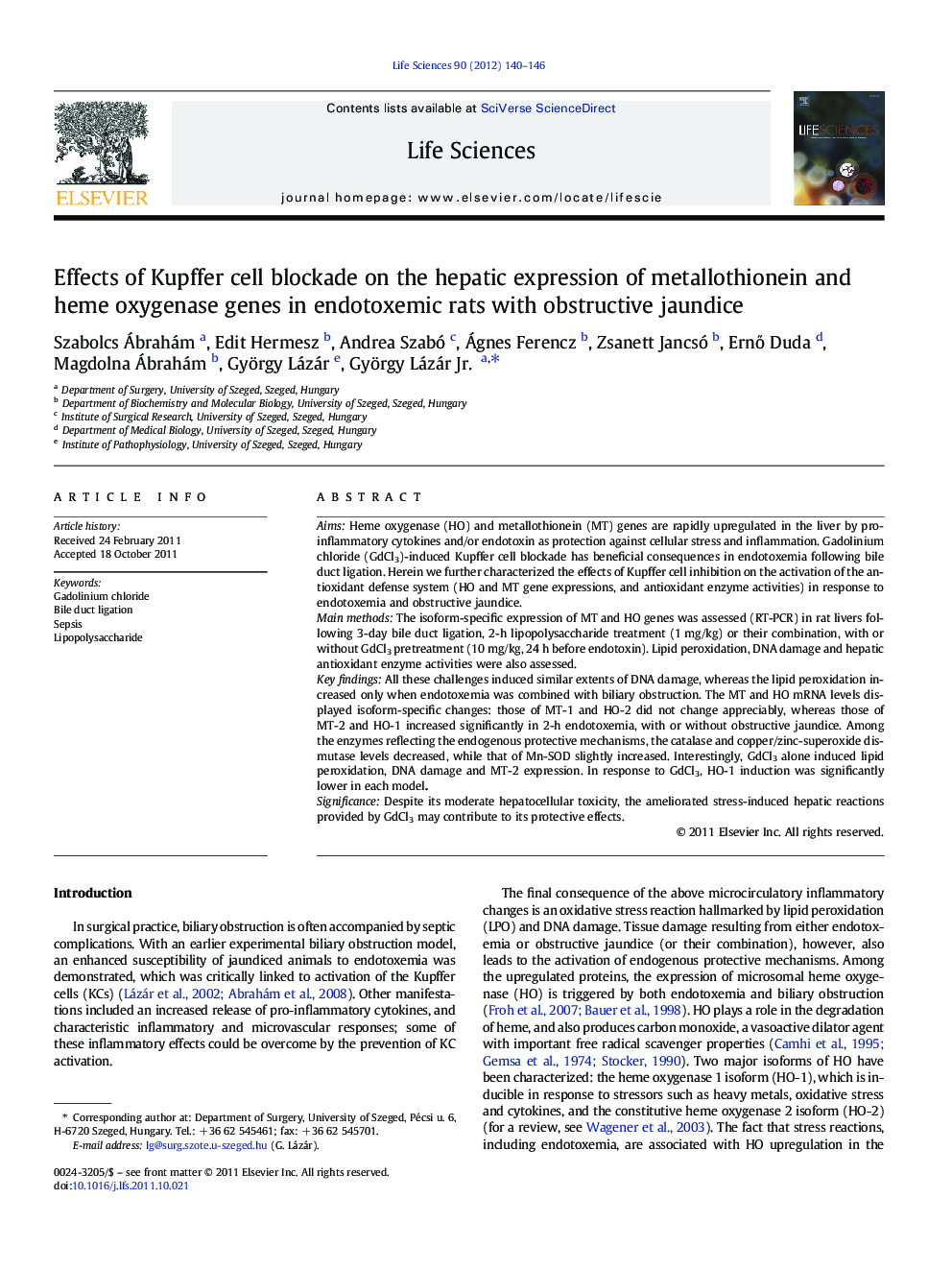| کد مقاله | کد نشریه | سال انتشار | مقاله انگلیسی | نسخه تمام متن |
|---|---|---|---|---|
| 2551706 | 1560660 | 2012 | 7 صفحه PDF | دانلود رایگان |

AimsHeme oxygenase (HO) and metallothionein (MT) genes are rapidly upregulated in the liver by pro-inflammatory cytokines and/or endotoxin as protection against cellular stress and inflammation. Gadolinium chloride (GdCl3)-induced Kupffer cell blockade has beneficial consequences in endotoxemia following bile duct ligation. Herein we further characterized the effects of Kupffer cell inhibition on the activation of the antioxidant defense system (HO and MT gene expressions, and antioxidant enzyme activities) in response to endotoxemia and obstructive jaundice.Main methodsThe isoform-specific expression of MT and HO genes was assessed (RT-PCR) in rat livers following 3-day bile duct ligation, 2-h lipopolysaccharide treatment (1 mg/kg) or their combination, with or without GdCl3 pretreatment (10 mg/kg, 24 h before endotoxin). Lipid peroxidation, DNA damage and hepatic antioxidant enzyme activities were also assessed.Key findingsAll these challenges induced similar extents of DNA damage, whereas the lipid peroxidation increased only when endotoxemia was combined with biliary obstruction. The MT and HO mRNA levels displayed isoform-specific changes: those of MT-1 and HO-2 did not change appreciably, whereas those of MT-2 and HO-1 increased significantly in 2-h endotoxemia, with or without obstructive jaundice. Among the enzymes reflecting the endogenous protective mechanisms, the catalase and copper/zinc-superoxide dismutase levels decreased, while that of Mn-SOD slightly increased. Interestingly, GdCl3 alone induced lipid peroxidation, DNA damage and MT-2 expression. In response to GdCl3, HO-1 induction was significantly lower in each model.SignificanceDespite its moderate hepatocellular toxicity, the ameliorated stress-induced hepatic reactions provided by GdCl3 may contribute to its protective effects.
Journal: Life Sciences - Volume 90, Issues 3–4, 16 January 2012, Pages 140–146